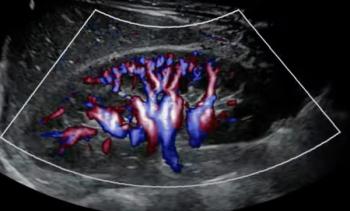
Scalable system delivers bang for investment buck
This spring, the first sites in the world will begin using Philips Medical Systems' newly minted BrightView family of gamma cameras. The compact dual-head product, unveiled at the 2006 RSNA meeting, shines at the high end of the company's nuclear medicine portfolio in performance and versatility.
This spring, the first sites in the world will begin using Philips Medical Systems' newly minted BrightView family of gamma cameras. The compact dual-head product, unveiled at the 2006 RSNA meeting, shines at the high end of the company's nuclear medicine portfolio in performance and versatility. But it need not be the most powerful gamma camera in the hospital or clinic.
Available in high-performance or value configurations, BrightView can be built to suit demanding clinical needs or constrained budgets, while preserving an upgrade path to handle future requirements. Deepak Malhotra, senior director of marketing and business development for Philips nuclear medicine, expects BrightView to be especially attractive in outpatient settings.
"This has become a very challenging market in reimbursement, as the Deficit Reduction Act has put a lot of pressure on imaging centers," he said. "The smart move for them is toward efficient and cheaper equipment."
BrightView can be equipped with either 3/4-inch or 3/8-inch detector crystals. Customizable automated data acquisition supports multiple acquisition protocols simultaneously.
"Competitors talk about workflow scenarios and efficiency, but we always start with image quality," Malhotra said.
With its variable-angle detectors, BrightView can handle any exam, including cardiac studies, he said. Body contouring technology called Bodyguard boosts image quality, bringing the detectors close up to the patient and reducing the dead space that can impair resolution. Bodyguard uses electromagnetic sensors to define patient contours.
Any material that conducts electricity, such as body parts or even an intravenous line, stands out as an obstacle to be avoided. Not seen by the contouring system are nonconducting materials such as clothes, which can force detectors on optically based systems farther away than they need to be. BrightView's open 10-axis gantry handles positioning challenges while increasing patient comfort.
Fully tricked out, BrightView outshines other gamma cameras in the Philips lineup, including the company's SkyLight and Forte. Philips plans to continue offering these two systems, however, to provide a range of features and price points. Skylight, for example, can image two patients simultaneously.
"We also anticipate that customers will have two or three Fortes and want to add another because of the learning curve," Malhotra said.
BrightView will have the advantage, however, in smart features such as body contouring and flexibility in pricing.
"It will be very competitive against our own and other companies' systems," he said. "A wide range of customers will benefit from this technology, not just those at either the high or low end."
Newsletter
Stay at the forefront of radiology with the Diagnostic Imaging newsletter, delivering the latest news, clinical insights, and imaging advancements for today’s radiologists.




























